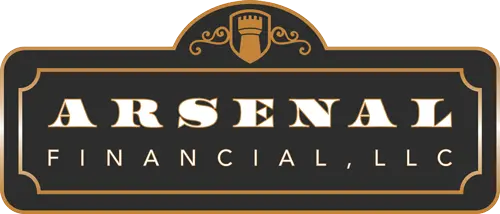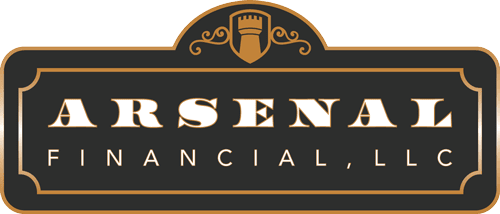Thoughts for Small Businesses regarding SEP IRA’s
A summer like no other. As if our plates aren’t full enough with the many adaptions to 2020 and the cancellation of vacations and Summer Camps – it is also finally time to file taxes!!
The CARES Act (the name for the 2020 stimulus bill) provided a delay in the 2020 Tax Filing to July 15th. For businesses that have fewer than 5 employees, we’d like to take a minute to talk about the SEP-IRA (Simplified Employee Pension Individual Retirement Arrangement).
The SEP-IRA is a great place for self-employed individuals to direct money for retirement. But it’s important to learn—and stay within—the legal contribution limits and deadlines.
Basics of SEP-IRAs
SEP plans provide business owners a vehicle for saving for retirement for themselves and their employees.
- Under a SEP plan, businesses of any size, including self-employed individuals, can establish and contribute money for each employee of the business to a SEP-IRA.1
- The SEP-IRA is a fairly simple retirement account that you can establish and manage with minimal paperwork and no annual filing requirements.2
- SEP-IRAs give savers the ability to make tax-deductible contributions and grow the earnings from those contributions on a tax-deferred basis—that is, neither the initial contribution nor the gains will be taxed until you withdraw them in retirement.3
- SEP-IRAs also offer funding flexibility from one year to another—tailor made for the rapidly changing environment we are in. If it is a tight year, you can choose not to make any contributions that year.
SEP-IRA Contribution Limits
One of the most appealing features of SEP-IRAs is the large amount you can put away for retirement. All SEP-IRA contributions are considered employer contributions on behalf of employees. If you decide to establish a SEP-IRA, you can contribute up to the lesser of:
- 25% of employee compensation
- $57,000 in 2020 ($56,000 in tax year 2019)
Perhaps the most important note on SEPs: If you’re contributing on behalf of other employees of the business, you have to contribute the same percentage of compensation for all employees.
The high contributions potential of the account may allow you to put away more money for retirement in an SEP-IRA than you could in a traditional IRA. This is because depending on your actual income, the SEP-IRA contribution limits may be greater than the Individual Retirement Account (IRA) IRA limit of $6,000 in 2020 ($7,000 for people aged 50 or older).5
Also compare SEP-IRA limits to the 401(k) contribution limit for employees, which is $19,000 ($25,000 for ages 50 or older) for tax year 2019 and $19,500 ($26,000 for ages 50 or older) in tax year 2020.6 Unlike IRAs and 401(k)s, SEP-IRAs do not offer any catch-up provisions.7 But the good news is that the SEP-IRA contribution limits are already high.
Calculating Your Net Adjusted Self-Employment Income
Self-employed individuals will have to use their net adjusted self-employment income as compensation when calculating the SEP-IRA contribution limit of 25% of compensation. Use this special formula to calculate your net adjusted self-employment income:
- Determine your gross income.
- Subtract business expenses (including your SEP-IRA contributions).
- Subtract half of your self-employment tax.8
The Arsenal Financial Resources webpage has a useful calculator to help you determine your maximum contributions to a SEP-IRA. However, it is advisable to consult with a professional tax advisor if you have additional questions about how much you can contribute to a SEP-IRA.
Contribution Deadlines for SEP-IRAs
Like traditional IRAs, SEP-IRAs provide a last-minute tax savings opportunity to reduce your tax bill as a business owner. However, you must adhere to the SEP contribution deadlines to reap those savings at tax time.
If you are self-employed or own a small business, a SEP-IRA must be established by your company’s tax filing deadline (plus any extensions) for the tax year to which the qualifying contribution is made.7
- For example, THIS YEAR the tax filing deadline for many entrepreneurs and small business owners (“Schedule C Filers”) for the tax year is July 15th
- Requesting an extension will extend the tax filing deadline, until October 15. It is important to remember that requesting a filing extension does not provide an extension on paying the taxes that will eventually be due.
- You will still have time to establish a SEP-IRA and make a SEP-IRA contribution until the tax filing deadline.
- Be sure to notify the IRA custodian to code the contribution for the prior year, if that is your intention.
What if I applied for the PPP (Paycheck Protection Program) this year?
If you have received money from the Paycheck Protection Program (PPP) this year, you can still contribute to a SEP, but do so carefully. Work with your accountant and financial advisor to see how acceptance of PPP Funds and PPP Loan Forgiveness may impact any Employer Retirement Plan your business has. Remember the goal of the PPP is to keep business plans on track – and that includes pre-existing retirement planning.
Other Retirement Plan Options for Small Business
There are other retirement plans for small businesses and self-employed individuals:
- SIMPLE IRAs
- Individual 401(k)
- Traditional 401(k) plan for small businesses
- Cash Balance Pension Plan for Small Business
Before establishing an SEP-IRA and contributing your hard-earned money according to these contribution limits and deadlines, it makes sense to compare the various retirement options for small businesses and decide which one is right for your needs.
An uncertain economy can be distressing, especially to our entrepreneurs. But time is life’s most precious resource and missing out on a year’s retirement contributions could ultimately extend the amount of time you have to work in your business.
We are here for these difficult conversations. Let us know how we can help.
Stay well!
~Team Arsenal
Article Sources
- “Simplified Employee Pension Plan (SEP).” Accessed Jan. 16, 2020.
- “Choosing a Retirement Plan: SEP.” Accessed Jan. 16, 2020.
- “Publication 560 (2018), Retirement Plans for Small Business.” Accessed Jan. 16, 2020.
- “Retirement Topics – IRA Contribution Limits.” Accessed Jan. 16, 2020.
- “401(k) Contribution Limit Increases to $19,500 for 2020; Catch-Up Limit Rises to $6,500.” Accessed Jan. 16, 2020.
- “SEP Plan FAQs – Contributions.” Accessed Jan. 16, 2020.
- “Self-Employed Individuals – Calculating Your Own Retirement-Plan Contribution and Deduction.” Accessed Jan. 16, 2020.
- “Publication 560: Retirement Plans for Small Business (SEP, SIMPLE, and Qualified Plans),” Page 14. Accessed Jan. 16, 2020.

